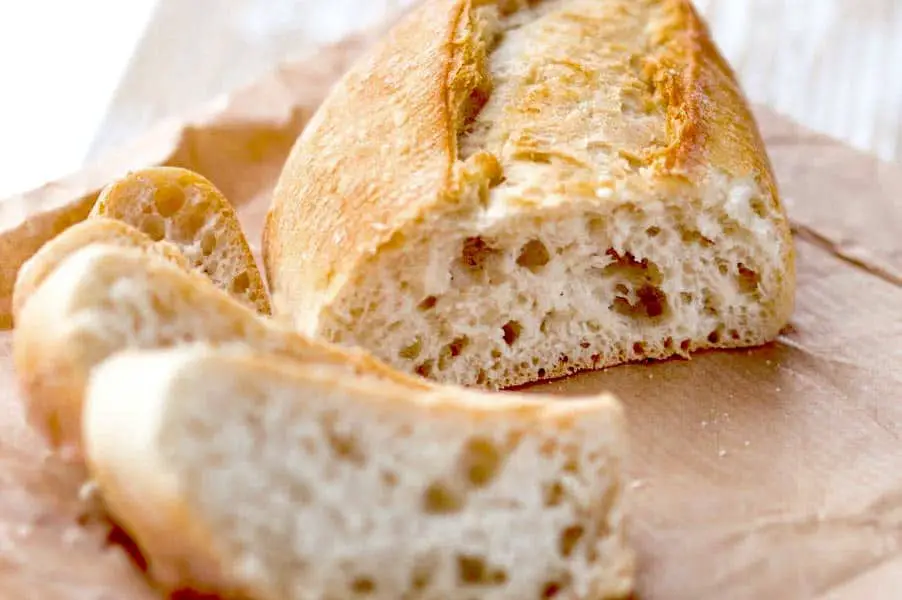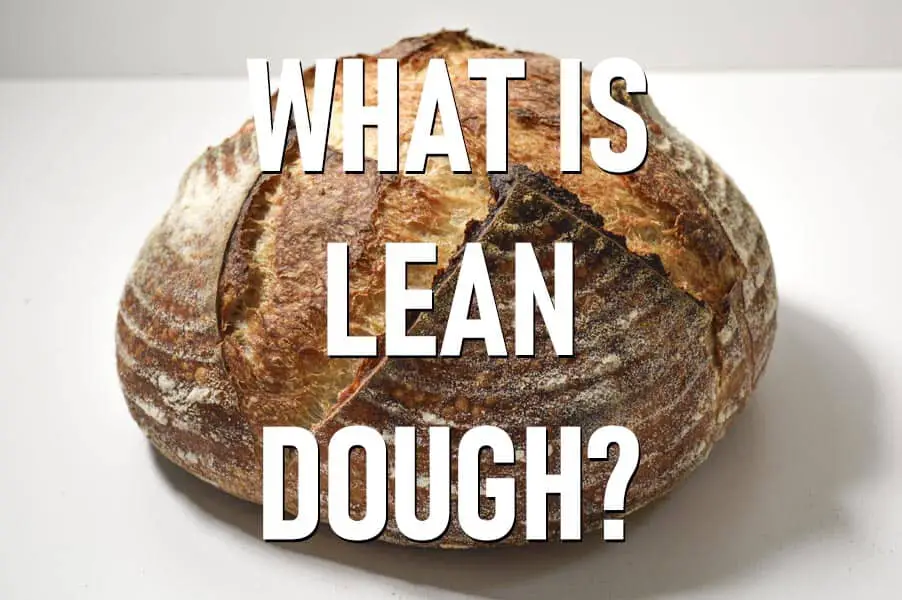We’ve been at this baking thing for quite some time, and we’re still running into terms we’ve never heard before. There are just so many terms involved in baking, I think we could spend a lifetime learning them all.
Thankfully, a lot of bread related terms are descriptive and representative of their meaning. Lean dough is one of those terms. In fact, once we answer it for you, I bet you’ll say, “Ahhh, that makes sense.”
A lean dough does not have added fat, eggs, dairy, and sugars, hence it is considered lean. They most often consist of just flour, water, salt, and yeast. Common bread varieties made from lean dough are artisan loaves with crispy crusts.
In some applications, a small amount of sweetener can be added for flavor or to wake up active dry yeast, but in the strictest sense, lean dough does not include them.
The term is most often used when trying to communicate what ingredients will be needed. It is actually helpful as a home baker to know right out of the gates if a recipe is asking me to make a lean dough or not.
If the recipe says we’ll be making a lean dough, I’m confident I’ll have all the ingredients on hand (we keep a well-stocked flour supply on hand). But, otherwise, there might be things like potato flakes or milk that might not be in the pantry or fridge.
As an added bonus, I’ll know it’s going to be a cleaner experience. 🙂
What are Lean Doughs Used For?

Lean doughs make rustic artisan-style loaves that have airy open crumbs (inside) and crispier and crunchier crusts. Common varieties are listed below with the basic ingredients used for a single loaf.
- Sourdough – 500 grams flour, 350 grams water, 100 grams sourdough starter, 10 grams salt
- No-Knead Rustic Loves – 500 grams flour, 300 grams water, 10 grams salt, 1/4 teaspoon commercial yeast
- Baguettes – 500 grams flour – 350 grams water – 1/8 teaspoon commercial yeast (making a poolish) – 10 grams salt
They don’t have to be those styles, they can be baked into sandwich loaves, and other varieties, but without the addition of dough softeners the crusts will be significantly harder than a typical sandwich loaf.
Are Lean Doughs Easier or harder to Make?
Lean doughs can be easier to make, due to the limited ingredients involved. As I alluded to above, less to mix means less to clean up. That is a win in my book. But they tend to take longer, as they are not aided by the flavor and structure of binding ingredients like many enriched doughs are.
Enriched doughs often utilize more yeast and therefore progress faster than lean doughs. If you’re not sure what enriched dough is, jump on over to our post on that when you’re done here.
Lean doughs typically need to have less yeast in order to give it enough time to develop gluten before it overproofs. Gluten is strengthened when dough is kneaded and continues to grow stronger as time progresses. This is what allows dough, especially lean dough, to have enough structure to hold its form and rise in the oven. Without milk, fat, or eggs to bind everything together more time is a must.
Additionally, lean dough needs time to develop flavor. Without milk, fat, and sugar dough takes a while to really develop the trademark flavor we all love.
But, to be honest, it’s mostly a preference thing. Lean dough is not intrinsically easier or harder than enriched.
Is Lean Dough Better?
Again, lean dough comes down to preference in most aspects. Some meals pair better with a rustic loaf of sourdough than a dinner roll. On the other hand, dinner rolls go with just about any meal around here. 🙂
There might be an argument for lean dough being healthier. Without the added calories and fats associated with enriched doughs, it certainly is better for the waistline. But, both are perfectly fine, and healthier options if made at home than most anything found in supermarkets.
This is especially true with sourdough. I wouldn’t call sourdough a health food, but homemade sourdough is about as healthy as bread can get (source).
I do honestly have to admit, that sourdough potato rolls are the most popular bread Carrie and I make among friends and family. Which is enriched. Most people (at least in the U.S.) tend to prefer the soft and chewy bread varieties versus the crunchy lean dough type.
We’re in the middle, we love both!

